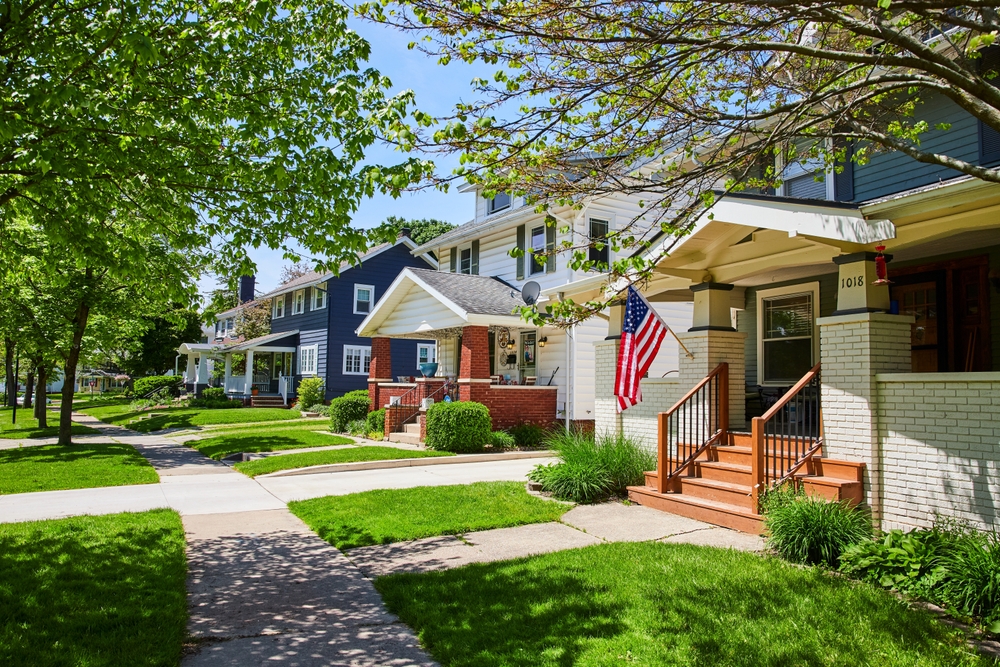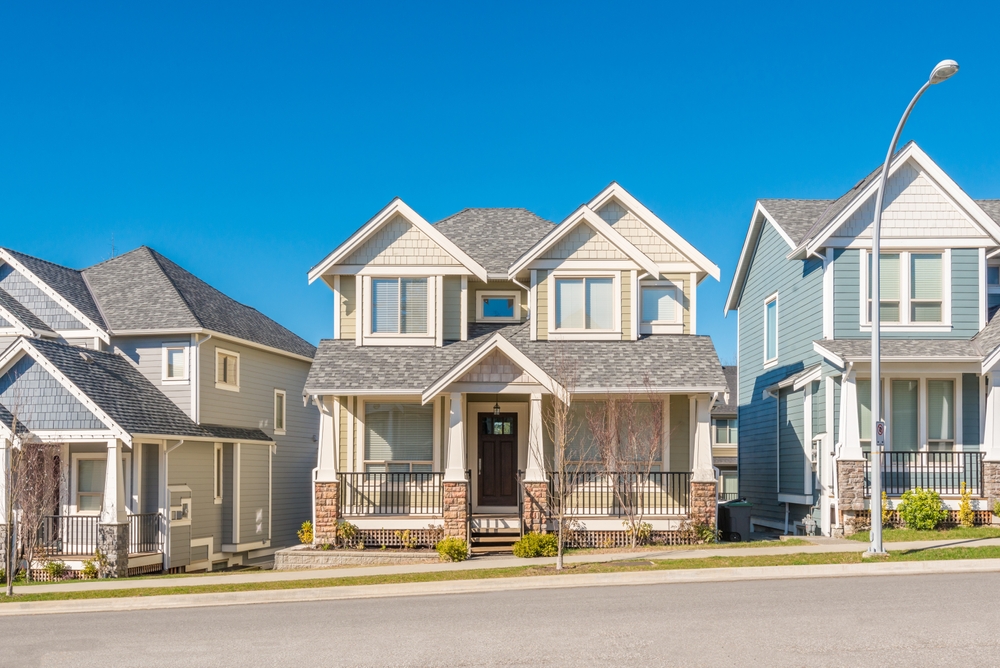Remember the days when “working from home” meant staying in your pajamas, pretending to be on a conference call while secretly binge-watching Netflix, and occasionally muting yourself to yell at the dog for barking at the mailman? Ah, simpler times. Well, those days are gone—sort of. The COVID-19 pandemic didn’t just change how we work; it fundamentally altered where we live. What started as a temporary experiment in remote work has turned into a full-blown lifestyle revolution. And with it, our homes have undergone a transformation worthy of an HGTV makeover show.
Gone are the days when a cramped city apartment with a “cozy” (read: microscopic) kitchen and a “view” of the neighbor’s fire escape felt like a reasonable trade-off for being close to the office. Suddenly, that same apartment felt less like a sanctuary and more like a shoebox—especially when it had to double as an office, a school, a gym, and occasionally a panic room. Enter the era of larger homes, suburban living, and the great migration away from urban centers. It’s like The Odyssey, but with fewer mythical creatures and more Zillow listings.
As remote work became the norm, people started rethinking their living situations in ways they never had before. Why pay a fortune for a tiny apartment in the city when you could have a backyard, a home office, and maybe even a walk-in closet that doesn’t double as a storage unit? The result? A seismic shift in housing demand that’s reshaping everything from real estate markets to the way we think about community and work-life balance.
In this article, we’ll dive into how remote work is reshaping housing demand and what it means for the future of where—and how—we live. From the rise of the home office to the suburban renaissance and the growing trend of relocating to smaller towns, we’ll explore the forces driving these changes and what they could mean for you. So grab a cup of coffee (or a glass of wine, depending on how your workday is going), and let’s take a closer look at the new world of remote work and its long-term effects on housing demand. Spoiler alert: it’s not just about bigger closets.
The Rise of Remote Work
Let’s rewind to March 2020. Offices shut down seemingly overnight, commutes vanished into thin air, and Zoom became the new boardroom—complete with awkward pauses, accidental muting, and the occasional cameo from a curious cat or toddler. What started as a temporary fix—a “we’ll be back in the office in two weeks, tops!” kind of situation—has turned into a permanent shift that’s reshaping the way we work and live. According to a McKinsey report, 58% of Americans now have the option to work remotely at least one day a week, and 35% can work from home full-time. Companies like Twitter (Now of course X) and Shopify have gone all-in, declaring remote work a permanent option for their employees. Even tech giants like Google and Facebook have embraced hybrid models, allowing employees to split their time between home and office. It’s safe to say that the 9-to-5 grind as we knew it is officially a relic of the past.
But it’s not just employers driving this change—employees are all in, too. A Buffer survey found that a whopping 98% of remote workers want to continue working remotely, at least part-time, for the rest of their careers. And who can blame them? No more soul-crushing commutes, no more awkward small talk by the coffee machine, and no more pretending to look busy when the boss walks by. Instead, remote work offers flexible schedules, the freedom to design your own workspace, and, let’s be honest, the ability to work in sweatpants (a universal win). For many, it’s not just a perk—it’s a game-changer.
This seismic shift in how we work has had a ripple effect on nearly every aspect of life, but perhaps none more so than housing demand. Suddenly, people are rethinking what they need from their homes. That tiny apartment in the city that was once perfect for a single professional or a couple without kids? Not so much when it has to double as an office, a school, and a gym. The demand for space—both physical and mental—has skyrocketed, and it’s reshaping the real estate market in ways we’re only beginning to understand. From the rise of home offices to the migration to suburbs and smaller towns, remote work isn’t just changing where we work—it’s changing where we live, too. And as we’ll see, this trend is far from over.
Demand for Larger Homes
If you’ve ever tried to take a work call while your dog barks at the mailman or your kids reenact Frozen in the background, you know why people are craving more space. The home office has become the new must-have feature, and it’s driving demand for larger homes. According to the National Association of Realtors, 63% of homebuyers now prioritize space for a dedicated workspace. And let’s be real—after two years of makeshift desks at kitchen tables and Zoom calls interrupted by doorbells, who wouldn’t want a quiet, distraction-free zone to actually get work done? 
But it’s not just about home offices. Homes are now multi-functional spaces—part office, part school, part gym, and occasionally part panic room (thanks, 2020). Families are upgrading to homes with extra bedrooms, basements (which is one thing I miss here in California), or even backyard sheds converted into offices. One couple in Austin, Texas, famously turned their walk-in closet into a mini-office, proving that necessity really is the mother of invention (or at least creative real estate). Another family in Colorado transformed their garage into a hybrid workspace and yoga studio, because why not? When your home has to do it all, creativity becomes your best friend.
This trend has had a noticeable impact on the housing market. Prices for larger homes have surged, and inventory is tight. If you’ve tried to buy a house recently, you know it’s like The Hunger Games out there—may the odds be ever in your favor. Bidding wars have become the norm, with buyers offering everything from cash deals to heartfelt letters to win over sellers. And while it’s great news for sellers, it’s leaving many buyers feeling like they need a miracle—or at least a very generous relative—to afford their dream home. The demand for space isn’t slowing down, and neither is the competition. So, if you’re in the market, buckle up—it’s going to be a wild ride.
Suburban Living on the Rise
Remember when living in the suburbs was considered, well, uncool? Yeah, not anymore. The pandemic sparked an urban exodus as people traded cramped city apartments for spacious suburban homes. According to a Pew Research study, 22% of Americans moved during the pandemic or know someone who did, with many heading to the suburbs. Suddenly, the allure of white picket fences and backyard barbecues became irresistible, especially when compared to the noise, crowds, and sky-high rents of city life. It’s like the suburbs went from being the punchline of a joke to the star of the show.
Why the sudden love for suburbia? For starters, you get more bang for your buck. A three-bedroom house with a backyard in the suburbs often costs less than a one-bedroom apartment in the city. Plus, there’s the allure of quieter streets, better schools, and the ability to host socially distanced barbecues (because, let’s face it, we’re all a little traumatized by 2020). And let’s not forget the joy of having a driveway instead of circling the block for 20 minutes looking for parking. It’s the little things, right?
Suburbs are also adapting to this influx of new residents. Coffee shops, coworking spaces, and even fiber internet are popping up in areas once known for their lack of excitement. It’s like the suburbs are having a glow-up, and we’re here for it. Farmers’ markets, craft breweries, and trendy boutiques are now staples in many suburban towns, making them feel more like mini-cities than sleepy bedroom communities. Even the food scene is getting an upgrade, with farm-to-table restaurants and artisanal bakeries replacing the old chain diners. Who knew suburbia could be so chic?
Relocation Trends
Remote work has given people something they didn’t even know they wanted: geographic flexibility. Why live in an expensive city when you can work from a beach in Bali or a cabin in the Rockies? Okay, maybe not everyone is moving to Bali, but you get the idea. People are relocating to smaller cities, rural areas, and even entirely different states. For some, it’s about being closer to family; for others, it’s about trading traffic jams for hiking trails or swapping high-rise living for a front porch with a view. The possibilities are endless, and remote work has opened the door to a whole new way of life.
Take Boise, Idaho, for example. Once a sleepy city, it’s now one of the hottest destinations for remote workers, thanks to its affordable housing and outdoor lifestyle. Similarly, towns in Vermont and Maine are offering cash incentives to attract remote workers. It’s like The Bachelor, but for real estate—except instead of roses, you get a lower cost of living and a better quality of life. Even international destinations like Portugal and Costa Rica are rolling out the red carpet for remote workers, offering special visas and tax breaks to lure them in. It’s a global phenomenon, and it’s changing the way we think about where we call home.
This trend is also reshaping local economies. Small towns are seeing a boost in demand for housing, restaurants, and services. New businesses are popping up to cater to the influx of remote workers, from coworking spaces to artisanal coffee shops. But it’s not all sunshine and roses—some locals worry about rising prices and the loss of community character. Still, for many remote workers, the appeal of a slower pace of life is too good to pass up. Whether it’s the charm of a small town or the tranquility of a rural retreat, remote work has made it possible to live where you truly want to live—not just where your job happens to be. And for many, that’s a game-changer.
Challenges and Considerations
Of course, this shift isn’t without its challenges. For one, housing affordability is becoming a major issue. As demand for larger homes and suburban properties increases, so do prices. In some areas, bidding wars have become the norm, leaving first-time buyers feeling like they’re stuck in a real estate version of Squid Game. Even renters aren’t immune, as landlords hike prices to capitalize on the growing demand for more space. It’s a tough market out there, and for many, the dream of homeownership feels further out of reach than ever.
There’s also the question of infrastructure. Can suburbs and rural areas handle the influx of new residents? Roads, schools, and internet networks are all feeling the strain. In some towns, the sudden population boom has led to overcrowded schools and longer commutes, while rural areas are scrambling to expand broadband access to meet the needs of remote workers. And let’s not forget the work-life balance conundrum. When your home is also your office, it’s easy to feel like you’re always “on.” Setting boundaries is key—unless you enjoy answering emails at 11 p.m. (spoiler: no one does). For many, the challenge isn’t just finding the right home—it’s figuring out how to make that home work for every aspect of their lives.

So, what does the future hold for housing demand in the age of remote work? One thing’s for sure: the way we think about our homes has changed forever. Larger homes, suburban living, and relocation trends are here to stay, at least for the foreseeable future. Whether you’re dreaming of a home office with a view or a backyard big enough for a trampoline (because why not?), remote work has given us the freedom to rethink where and how we live. And as technology continues to evolve, making remote work even more seamless, these trends are likely to deepen, reshaping not just housing markets but entire communities.
As we navigate this new normal, it’s worth considering how these changes might affect your own housing decisions. After all, your home is more than just a place to live—it’s your sanctuary, your office, and maybe even your gym. It’s where you spend the majority of your time, so it’s worth investing in a space that truly works for you. And if all else fails, there’s always the walk-in closet office. Hey, it worked for that couple in Austin. The key is to embrace the flexibility that remote work offers and create a living space that supports both your professional and personal life. After all, if 2020 taught us anything, it’s that home is where the Wi-Fi is strong—and where you can finally mute that barking dog.


